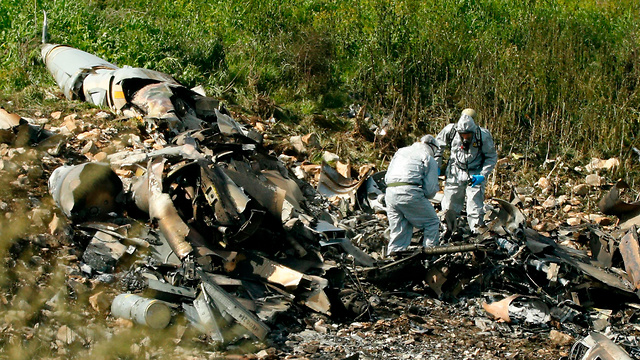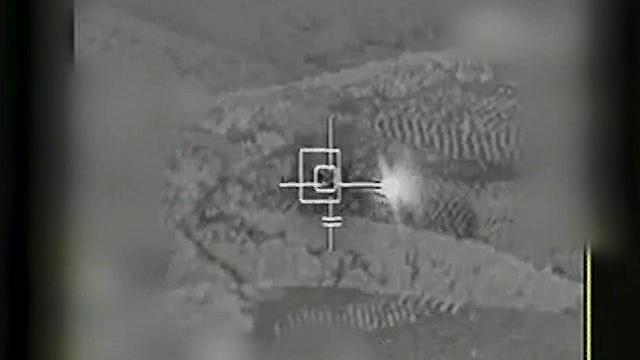What took place in the northern skies Saturday was no less than the first public day of fighting between Israel and Iran. The undercover activity, which has been taking place so far through armed emissaries—from Hezbollah to Syria—turned into a real battle Saturday: Iran sent an advanced aircraft into Israeli territory, either to take pictures or to attack. It infiltrated Israel and was intercepted. In response, the IDF attacked significant Iranian targets in Syria.
The equation of an intercepted Iranian UAV versus a downed IAF warplane is very bad for Israeli deterrence. An advanced F-16I plane with experienced pilots isn’t supposed to be shot down by a Syrian antiaircraft missile over Israeli territory, and this issue will likely be investigated.

The equation of an intercepted Iranian UAV versus a downed IAF warplane is very bad for Israeli deterrence (Photo: AFP)
This day of battle did have some very successful parts, however. We can’t rule out the possibility that this was a well-planned ambush by the Iranian Revolutionary Guards. By launching such a special operation and sending an aircraft into Israel, they are preparing not only for the possibility it will be downed, but also for an IAF attack on its operations trailer. That’s why they responded immediately with the strongest antiaircraft fire ever fired by the Syrians, and managed to hit one plane—which eventually crashed.
And this is where another battle begins, the battle of perception: Who won the most significant round of fighting the Syrian arena has experienced since the first Lebanon War? The Israeli Air Force was highly successful in its level of alertness and in tracking and intercepting the aircraft within Israeli territory to prove it was Iranian.
The Israeli success was reflected in the second stage too: An accurate surgical strike on the operations trailer at the T-4 airbase in Palmyra, an attack on 12 significant Iranian targets in Syria and on aerial defense systems.
What will be remembered at the end of the day, however, is the fact that an F-16I Soufa plane was downed in Israeli territory. In the battle of perception, the video of the parachuting pilots will be engraved in our collective memory more than the video of the attack on the UAV or the attack on the operations trailer.

The Iranian UAV’s interception. The next northern war will include dozens of such aircraft (Photo: IDF Spokesperson's Unit)
Addressing the incident on Saturday, Hezbollah defined it as “a new strategic stage, which will put an end to the invasion of Syrian airspace and territory. The old equations have been cancelled.” This is the test we will but put to in the next northern war.
In the next war, Hezbollah will launch dozens of aircraft of this kind. Our freedom of action in Lebanon will be even more limited, and it’s safe to assume that Israeli planes will be downed. To prevent the next war, or at least postpone it as much as possible, we must strengthen the Israeli deterrence vis-à-vis Iran, Syria and Lebanon.
And yes, we must also reach understandings with the Russians too. The world powers must take the Israeli interest into account when drawing the finishing lines of the Syrian battle.
First public Israel-Iran clash was only a taste of the next war : http://ift.tt/2EVkPXv
No comments:
Post a Comment